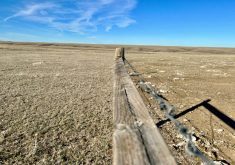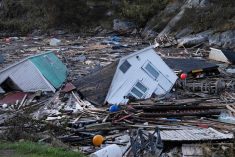At its 66th annual international conference in July, the Soil and Water Conservation Society released this position statement on climate change and soil and water conservation. SWCS is a scientific organization with chapters throughout the U.S. and Canada, and which has over 5,000 members around the world.
The Soil and Water Conservation Society finds that climate change, in combination with the increasing demand for food, fibre, forage, and biofuel feedstocks, presents a formidable challenge to food security and protection of the environment.
Read Also

Cooking fish of Manitoba: Keep your catch fresh and tasty for the table
Fishing in Manitoba provides mouthwatering meals, assuming anglers handle, process and cook their fish properly before sitting down to eat. Here’s how, with recipes and fish preparation tips.
Greenhouse gases contributed by agr iculture are an important factor in climate change. Extreme weather events are creating environmental problems, accelerating the rate of erosion, and threatening agricultural production. Key world agroecosystems that rely on significant amounts of irrigation water are being threatened because water resources are being depleted.
Concerns about food security will increase in the coming decades due to impacts from climate change, deforestation, erosion, depletion of water resources, and other climate change consequences. Higher cost for fuel and other energy forms will also affect agriculture and thus food security. The development and implementation of sound conservation-practice systems to address the impacts of climate change will be key for each country’s health, social stability, and security.
ADDRESSING CLIMATE CHANGE
Position:The SWCS finds that soil and water conservation practices can play a major role in mitigation of agriculture’s contribution to greenhouse gas emissions and adaptation to changes in seasonal precipitation and temperature patterns. A sound scientific approach that applies soil science, agronomic practice, and conservation will be needed to maintain sustainable and productive agricultural systems for a stable food supply. There is a direct relationship between soil and water conservation and agricultural productivity.
MITIGATION AND ADAPTATION
Position:Government, private, and non-profit stakeholders should apply the following principles in choosing and promoting soil and water conservation practices to mitigate and adapt to climate change:
Increase soil carbon levels. Increasing soil carbon enhances crop production and mitigates greenhouse gas emissions through carbon sequestration.
Maintain surface cover. The maintenance of surface cover through crop residue and cover crops in their growing, dormant, and senesced states protects soil from the erosive effect of rainfall and run-off.
Cultivate perennial vegetation as biofuel feedstock. Perennial vegetation stores carbon through enhanced root development and its above-ground vegetation serves as biofuel feedstock.
Use agroforestry practices to create windbreaks and riparian buffers where possible. Agroforestry reduces erosion impacts and sequesters carbon in the soil.
Target conservation practices. Precisely targeted conservation practices can efficiently and effectively address extreme weather events at the landscape scale.
Promote crop input efficiency. Crop input efficiency is promoted through improved nutrient management, irrigation efficiency, and energy efficiency.
PUBLIC SUPPORT
Position:Government, private, and, non-profit stakeholders should co-ordinate efforts to communicate the relationship of soil and water conservation practices, climate change mitigation and adaptation, and food security. Continued funding for conservation practices and research depends upon public awareness of the benefits of the soil conservation. This co-ordinated communication effort should convey the following messages:
Soil ser ves as a sponge capturing carbon from the atmosphere. Soil and water conservation practices can protect soils and plants from the effects of changing seasonal temperature and precipitation regimes.
Education and conservation technical assistance are es sent ial for encouraging the adoption of conservation practices by farmers and ranchers.
Society must continue to develop conservation systems to address varying climate impacts.
Farmers and ranchers, scientists, and conservation practitioners exchanging information and experience improve the application and adoption of conservation systems.
Long-term research, data collection, and data availability are essential to the understanding of agricultural climate issues.
The public needs to understand the challenge farmers and ranchers face in mitigating and adapting to climate change.
PREPARATION FOR FUTURE CHALLENGES
Position:The government, private sector, and non-profit community should continue to invest in research to develop technologies and technology systems that enhance the resilience of agriculture and agricultural lands to the effects of climate change. As climate change continues to occur and its impacts become more pronounced, research must address:
The development of drought-tolerant crops and crop varieties.
Tolerance for changes in temperature and moisture regimes during the growing season to maintain agricultural productivity in the face of climate change.
Agricultural production and conservation systems that optimize nutrient, energy, and water use for productivity and resource sustainability purposes.

















